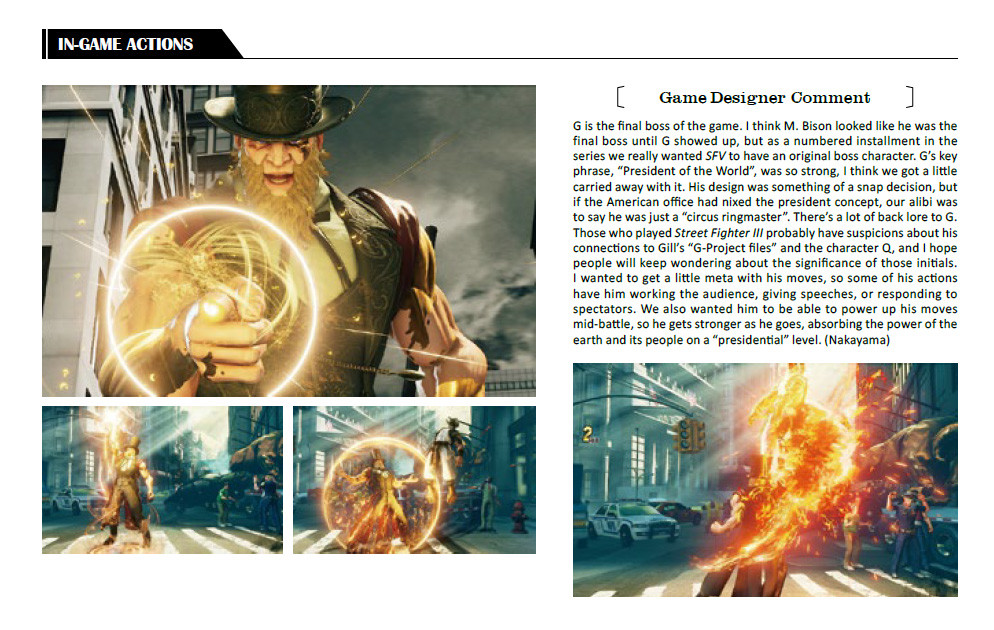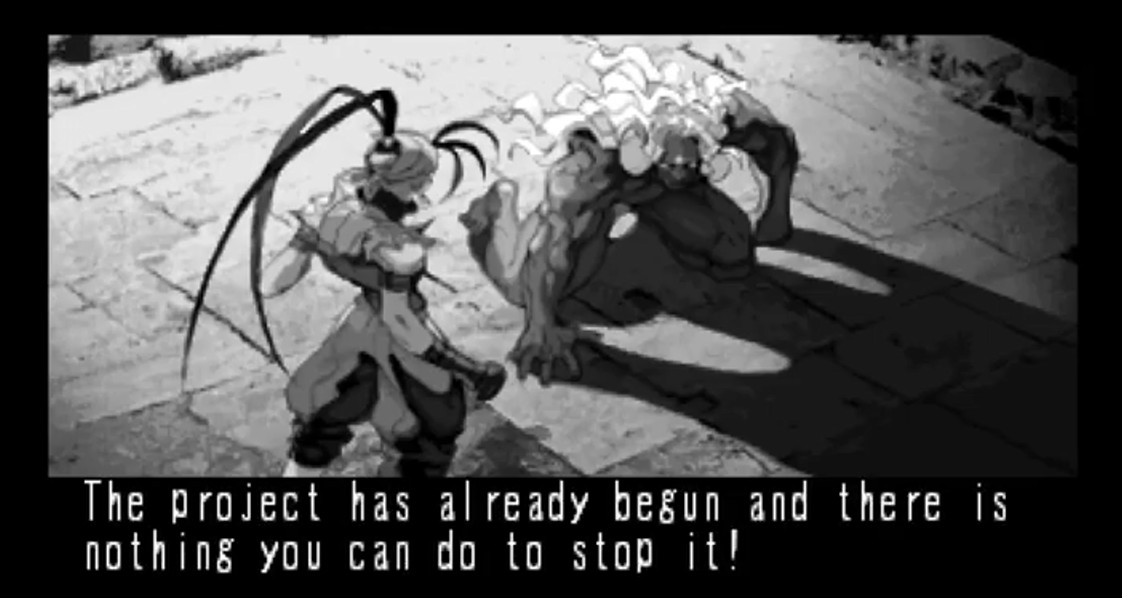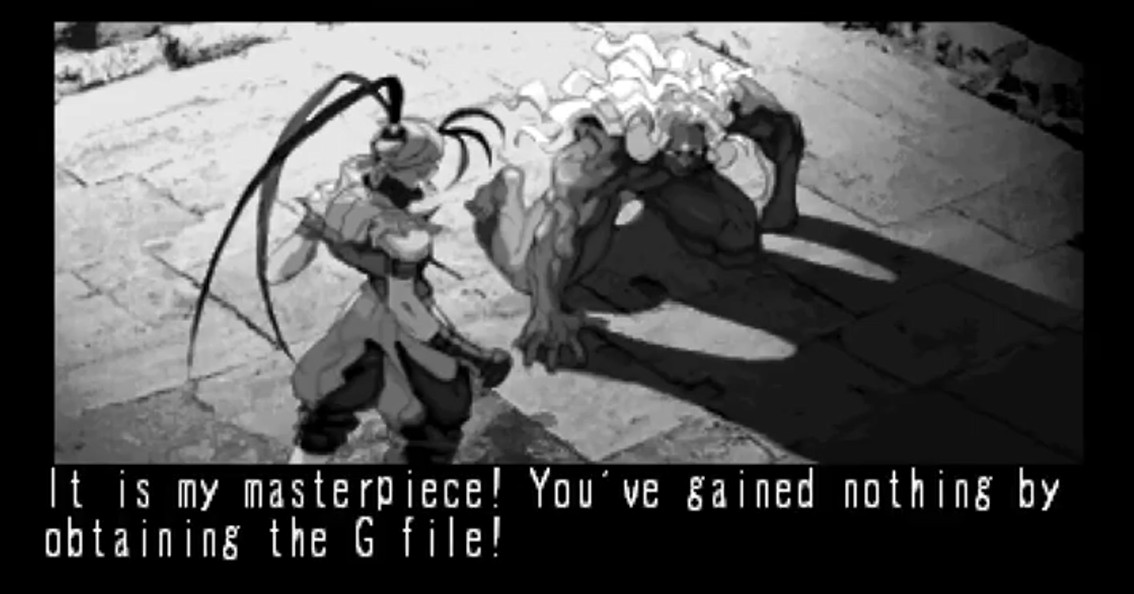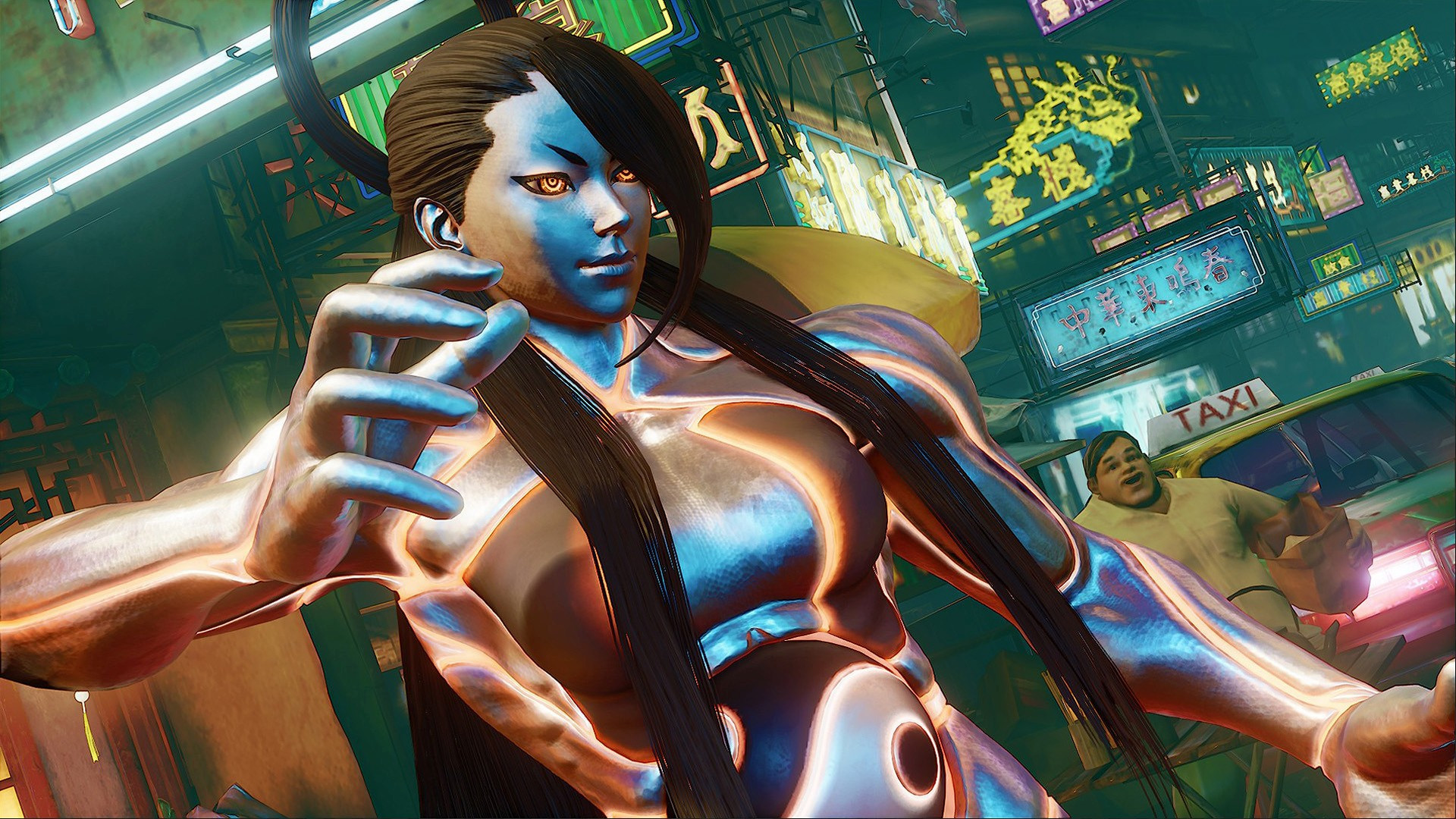For decades, the world of Street Fighter has been a battleground of iconic characters, each with their own unique stories and fighting styles. Yet, amidst this vibrant roster, one figure has consistently stood shrouded in mystery, captivating fans and sparking endless speculation: Q Street Fighter. This enigmatic character, debuting in Street Fighter III: Third Strike, has become a legend not for their flamboyant personality or earth-shattering powers, but for their profound silence and utter lack of backstory.
The mystique surrounding Q Street Fighter has only intensified over time. While other video game enigmas have captured imaginations, Q’s mystery feels different, deeper. Even the arrival of G in Street Fighter V, a character who openly acknowledges Q’s existence within the game’s lore, has only added fuel to the fire of fan theories. For years, the question has lingered:
Who exactly is Q?
Previously, theories attempted to peel back the layers of this enigma, with some suggesting Nash, the resurrected military operative, as a potential candidate. This theory hinged on circumstantial evidence – Nash’s blond hair (albeit in flashbacks), his volatile mood swings, his CIA infiltration capabilities, and, perhaps most strikingly, his apparent lack of a skeleton after his explosive demise in Street Fighter V’s story mode.
However, while intriguing, the Nash theory always felt incomplete, relying more on correlation than concrete proof. It was a plausible observation, but lacked the definitive punch to truly solve the riddle of Q. As the original article itself conceded, it was a theory waiting for the inevitable “monkey wrench” from Capcom.
That monkey wrench has indeed been thrown.
Emerging evidence has compelled a re-evaluation of Q’s identity, pointing towards a far more compelling candidate lurking beneath the trench coat and fedora. This candidate, while initially an unlikely fit, now aligns with the cryptic puzzle pieces in a way that is both surprising and remarkably coherent. After years of speculation and careful observation, the true identity of Q Street Fighter might finally be within reach.
Let’s delve into the evidence that reshapes the understanding of Q, beginning with insights from a key figure within the Street Fighter V development team.
G’s Shadow and the Lingering Question of Q
The release of G in Street Fighter V was a seismic event for lore enthusiasts, primarily due to his explicit connection to the elusive Q. An interview with Takayuki Nakayama, the director of Street Fighter V, from the “How To Make Capcom Fighting Characters” book, sheds crucial light on this connection.
 Matt Moylan G Pic
Matt Moylan G Pic
In this interview, Nakayama confirms G’s role as the final boss of Street Fighter V and reveals intriguing details about his design process. He notes that G’s “President of the World” concept was almost dialed back to a “circus ringmaster” idea if the American office had concerns. This duality is key to understanding G’s character. While he embodies the grandeur of a world leader, the “circus ringmaster” concept is not just a discarded idea, but a core element of his persona.
G’s flamboyant nature, his exaggerated pronouncements, and his skillful manipulation of social media all echo the theatrics of a ringmaster. However, a ringmaster needs a circus, performers to command attention. This raises a critical question: if G is the ringmaster, what is his circus?
Within the Street Fighter V universe, some characters seem to perceive G as the circus itself. Gill and Urien, figures of immense power and influence, dismiss G as a mere “clown.”
Gill to G: “An undocumented power… Is this person just a clown, or perhaps…”
Urien to G: “You lead the world? Tell me another one, clown!”
Conversely, others like Ken and Laura are drawn to G’s charismatic presence and passionate energy:
Ken to G: “Haha! Crazy show you put on out there!”
Laura to G: “Ha! So much passion! I like your style!”
G himself reinforces the idea of a collective, constantly using “we” when referring to his goals and influence:
G to Alex: “We all search for something…but do we need to find it?”
G to Birdie: “Our bellies are neither empty nor full. Why? Because we are all one!”
G to Juri: “O, citizen of Earth, even when sorrow and pity till our hearts—no, precisely in such times, we are one!”
G to Nash: “That wound… When you hurt, the citizens of the world hurt. We know this to be true.”
This persistent use of “we” suggests that G’s “circus” is not just a performance, but potentially an army. If the theory of G leading an army of Qs holds true, then the silent agents become his performers, his mysterious clowns executing a grand, global spectacle.
Furthermore, Nakayama’s interview directly links G to the Illuminati’s enigmatic “G-Project”:
“There’s a lot of back lore to G. Those who played Street Fighter III probably have suspicions about his connections to Gill’s “G-Project files” and the character Q, and I hope people will keep wondering about the significance of those initials.”
This confirmation is pivotal. It establishes that G, despite not being directly associated with the Illuminati, is indeed connected to both the G-Project and Q. Gill’s win quote against G, calling him “an undocumented power,” further supports the idea that the G-Project is an attempt to understand and document G’s unique abilities.
Ibuki’s ending in Street Fighter III: 2nd Impact offers a glimpse into the potential purpose of the G-Project. In this ending, Gill, after being defeated by Ibuki, gives her the G File:
 Gill Ibuki 1
Gill Ibuki 1
 Gill Ibuki 2
Gill Ibuki 2
This scene suggests that Gill seeks to utilize the knowledge gleaned from the G-Project to exert global control. Speculation arose that Gill might capture G and transform him into Q after draining his power. However, the interview clarifies G’s power dynamic – he is not being drained, but rather doing the draining. Nakayama states that G “gets stronger as he goes, absorbing the power of the earth and its people on a “presidential” level.” This aligns with the theory of G being an energy vampire, drawing power from the earth and those he interacts with, potentially transforming some into Qs.
This brings us back to the central mystery: who is the Q from Street Fighter III: Third Strike? While Nash was a plausible, albeit weakly supported, theory, a more compelling candidate has emerged – one who fits the criteria with surprising accuracy. This candidate embodies the robotic mannerisms, the unsettling yellow eyes, and even the distorted female vocalizations associated with Q.
It’s time to unveil the prime suspect in the Q Street Fighter mystery.
Q Revealed: Is Seth the Silent Agent?
The evidence strongly suggests that Q Street Fighter is Seth.
This revelation might seem unexpected, but a closer examination reveals a remarkable convergence of clues. Seth, the artificial being created by M. Bison, now reborn in a female robotic body, possesses a multitude of characteristics that align with the enigmatic Q.
 Seth
Seth
One initial point of contention often raised is Q’s perceived darker skin tone in Street Fighter III. Some fans theorized that Q might be David Spender, a CIA agent featured in Q’s ending.
 David SFV
David SFV
However, this darker skin tone can be readily explained by Seth’s own design. Seth’s robotic body exhibits varying skin tones, with darker shades in areas like the legs. While Q’s skin appears less shiny, the way light interacts with Q’s sprite could create a duller, yet still darkish, complexion.
Furthermore, the perception of Q as “white” can also be addressed through Seth’s design. While Seth’s legs are darker, the light emanating from Seth’s neck area, especially when contrasted with a white shirt, can create an illusion of lighter skin. This subtle interplay of light and shadow within the game’s visual style could easily lead to misinterpretations of skin tone.
For those still unconvinced by skin tone nuances, Seth’s various costumes offer further visual evidence. Many of Seth’s alternate costumes on their C.R.I. profile (https://game.capcom.com/cfn/sfv/character/seth/costume?lang=en) depict Seth with distinctly human-looking skin tones, further bridging the visual gap between Seth and a potentially human-appearing Q.
The question of hair color, with Seth sporting black hair, can also be explained by similar lighting and design choices. Just as light can influence skin tone perception, it can also lighten hair color. Even Seth’s Swimsuit costume showcases a lighter hair color, demonstrating that design variations can easily account for perceived differences.
Beyond visual similarities, Seth’s core characteristics resonate deeply with Q’s established traits. Seth is a malfunctioning machine, exhibiting yellow eyes and possessing a secondary female voice that warns of danger – all hallmarks of Q. Intriguingly, Seth’s new female form even provides an explanation for why Q’s skeleton is not visible when electrocuted. Seth’s ability to increase muscle mass, particularly evident in moves like Abigail Punch, suggests a capacity for sufficient muscle density to obscure skeletal visibility.
While Seth’s skeleton is briefly visible when shocked in gameplay, this could be attributed to a temporary system malfunction, a reversion to a “default” state under extreme duress. If this muscle-enhancing ability could be made permanent, perhaps through external control or manipulation, the increased muscle mass could effectively conceal Seth’s underlying skeletal structure.
Adding another layer to the Seth-as-Q theory is a perceptive observation made by Twitter user @4everbuffy regarding Seth’s costumes:
 Capture 4everbuffy
Capture 4everbuffy
This insightful tweet highlights Seth’s pattern of adopting costumes that mimic iconic boss characters from Street Fighter history, from Sagat to Gill. This costume selection reveals a deeper ambition within Seth – a desire to transcend his artificial origins and become the “true” boss, the ultimate antagonist of the Street Fighter universe.
Seth’s data absorption ability is key to this ambition. By absorbing data and personalities, Seth can effectively become other individuals, mimicking their fighting styles, personalities, and even aesthetic preferences. This transformative capacity makes the idea of Seth becoming Q not only plausible but narratively compelling.
Notably, Seth’s costume repertoire is missing one crucial boss character: G. This absence suggests that canonically, Seth has not yet encountered and absorbed G’s data. The potential for a future encounter between Seth and G becomes a significant point of speculation, particularly in the context of Seth’s potential transformation into Q.
Two intriguing scenarios could explain Seth’s transformation into Q:
Scenario 1: The Clash of Absorbers: In this scenario, Seth and G eventually clash, both attempting to absorb each other’s power. They both succeed to a degree, resulting in a hybrid being. Seth gains some of G’s immense power and global influence, while G, in turn, strips Seth of free will, recognizing the transformed Seth as a tool – a masked agent – and thus, Q is born. G, perhaps influenced by Seth’s data, places the Marz-created Q mask on Seth to complete the transformation.
Scenario 2: Illuminati Manipulation: In this more elaborate scenario, the Illuminati, aware of Seth’s unique abilities and unstable mental state (perhaps exacerbated by Juri’s interference), intervenes. Offering Seth a semblance of order and purpose, they exploit the data gathered through the G-Project to transform Seth into a being akin to G. The experiments, however, are imperfect, further fracturing Seth’s mind and body. The Illuminati, possibly having also captured Marz (the theorized creator of the Q mask), utilizes the Marz-created Q mask to exert control over the now-transformed Seth, solidifying his role as their silent agent, Q.
This second scenario opens up a fascinating possibility: the existence of two distinct types of Qs – one controlled by G, and another by the Illuminati. This potential duality sets the stage for a grand confrontation, a clash between G’s “Freemasons” and Gill’s Illuminati, a conflict that has been brewing in fan discussions for months.
The mystery of Q Street Fighter, once a seemingly impenetrable enigma, may finally be yielding to the light of investigation. The evidence points compellingly towards Seth as the individual behind the mask, a transformation born from ambition, manipulation, and the intricate web of Street Fighter lore. The next step is to unravel the cryptic narrative of Seth’s Street Fighter V arcade ending and see if it provides further clues to this captivating puzzle.
